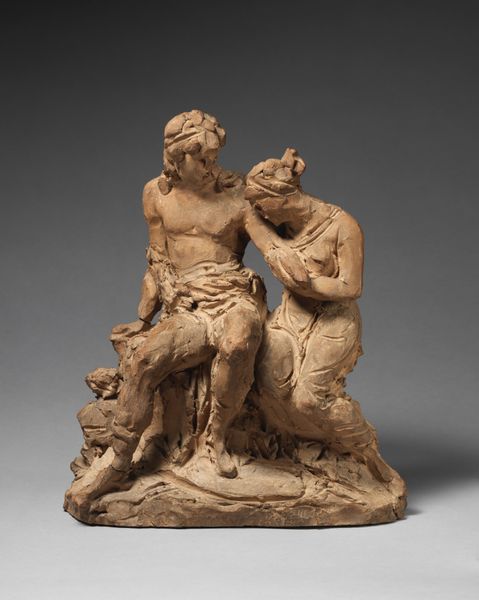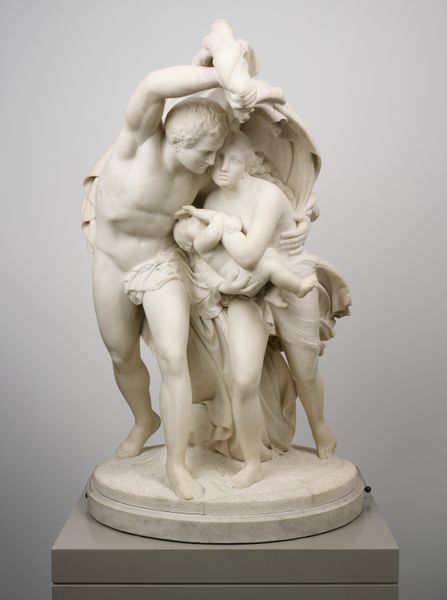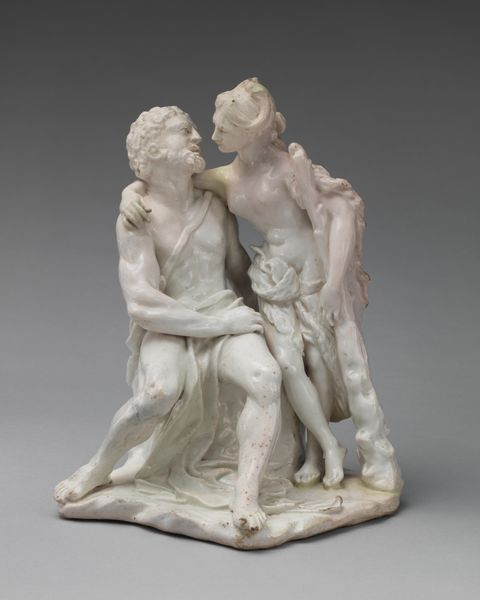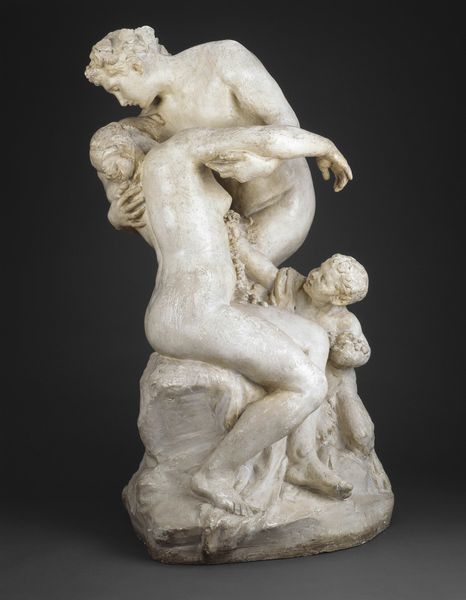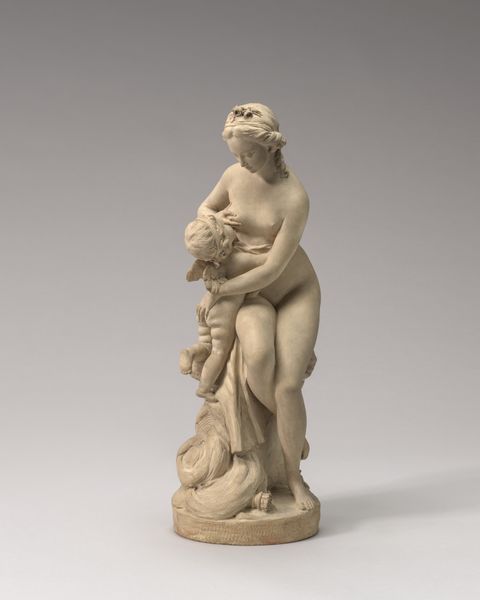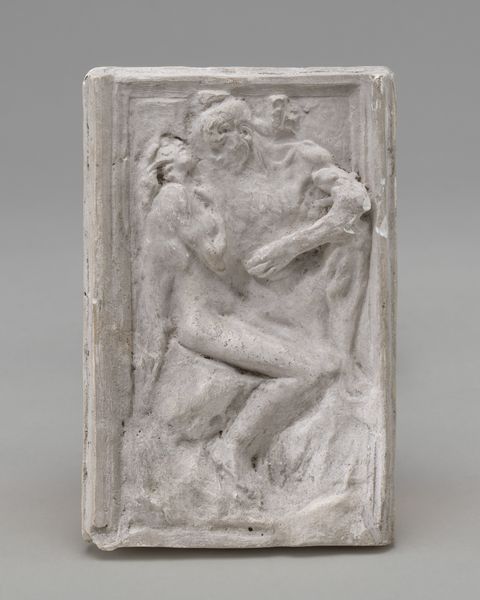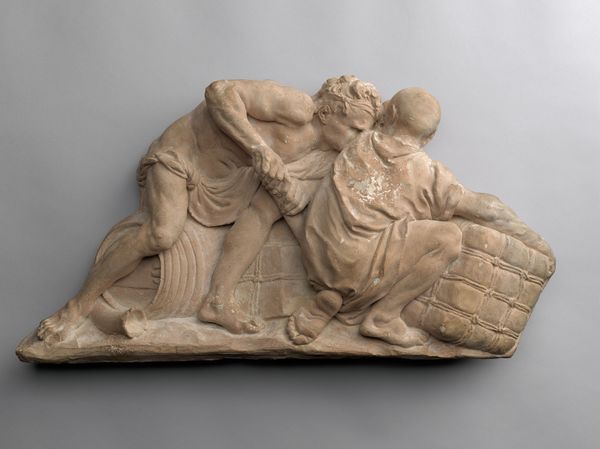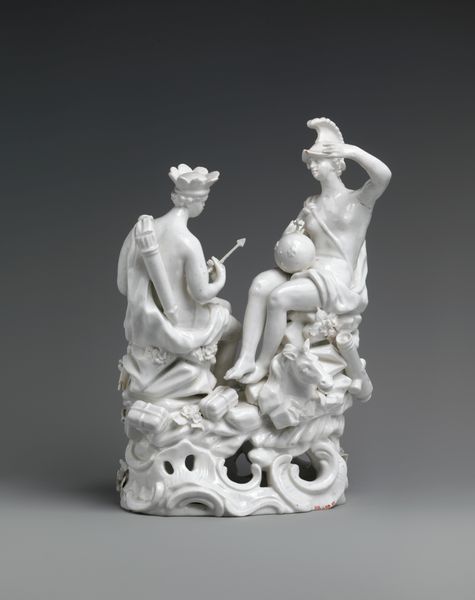
carving, sculpture, ivory
#
carving
#
baroque
#
figuration
#
sculpture
#
history-painting
#
nude
#
ivory
Copyright: Rijks Museum: Open Domain
Curator: Looking at this ivory carving, titled "Jupiter and Juno," created around 1670 by Johann Ulrich Hurdter, I am struck by the intimacy captured in such a rigid material. Editor: The contrast is immediately apparent. There’s this tension between the smooth, almost sensuous carving of the figures and the underlying themes of power, dominance, and maybe even coercion if we dig deeper. The medium itself seems to belie the weight of the narrative it's portraying. Curator: Precisely! During the Baroque period, such works often served as demonstrations of both artistic skill and the patron's refined taste. The depiction of classical mythology placed the owner within a lineage of educated elites familiar with these stories and the visual vocabulary for them. What details stand out to you in regards to that story being portrayed here? Editor: I notice how Juno pulls away slightly, a gesture that suggests perhaps a lack of agency. Jupiter's embrace, which might initially seem tender, can also be interpreted as possessive, even controlling. We can't ignore the inherently gendered dynamic represented here, reinforcing unequal power structures legitimized by the era's social norms. Curator: That tension is compelling. Hurdter's technical skill is undeniable; look at the draping of the cloth, the musculature, and the way he uses light and shadow despite the material limitations. We could also read the eagle, Jupiter’s attribute, as an endorsement of the divine right of kings. Do you see parallels there? Editor: Absolutely. And considering this piece likely graced a private collection, that imagery could have been consciously commissioned to signal authority. While the beauty of the carving can be appreciated on a superficial level, the piece speaks to a deeper, often problematic relationship between art, power, and the stories we choose to tell—or choose to overlook. I appreciate you offering context, the narrative feels fuller with that lens! Curator: The layering is there! Recognizing the multiple audiences for works such as these underscores how crucial it is to question what the image seeks to normalize and the power it subtly reflects and perpetuates. It gives the artwork further significance. Editor: Exactly, and understanding those layers, it invites us to actively consider our own position when viewing the work today, especially given the enduring relevance of discussions about gender, power, and representation. Curator: A complex discussion brought forth from what seems to be a small delicate sculpture, but is, in reality, filled with cultural weight and messaging that is essential to dissect even today. Editor: Beautifully put. A reminder that art is never neutral and requires ongoing critical engagement.
Comments
No comments
Be the first to comment and join the conversation on the ultimate creative platform.

